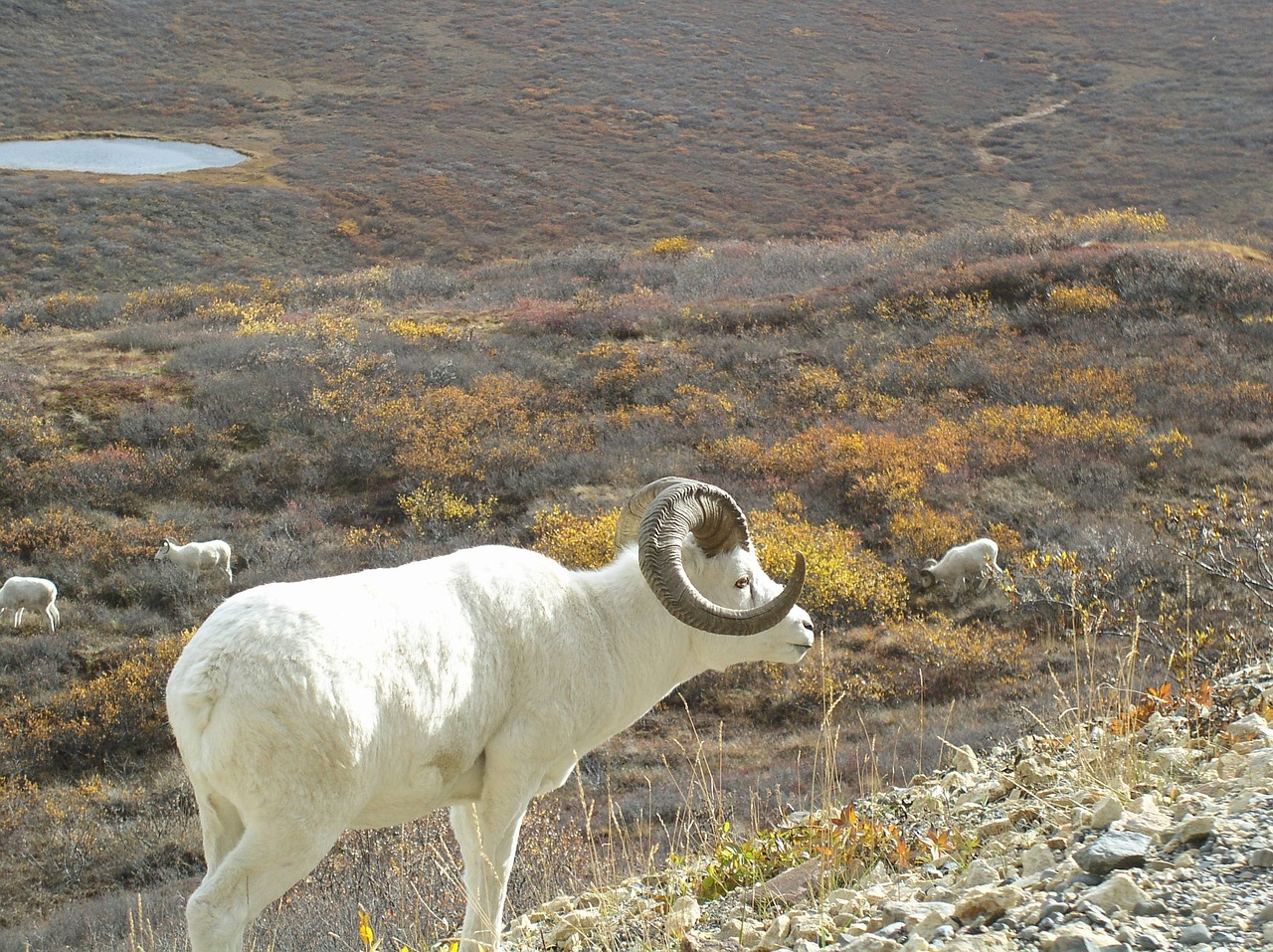
A microscopic bacterium with an outsized name, Mycoplasma ovipneumoniae (M. ovi) is a pathogen that increases mortality from respiratory disease in wild sheep, goats and musk ox. In the western United States, bighorn sheep populations have experienced population losses of up to 95 percent due to outbreaks of pneumonia in herds carrying M. ovi.
M. ovi is passed from domestic populations of sheep and goats to wild populations. “The bacterium is largely inert in domestic populations, but wild populations don’t have that inborn immunity and it can really wreak havoc,” said Ben Mohr, surface estate manager for CIRI’s Land and Resources division.
According to the Alaska State Division of Environmental Health, due to the structure of farms in Alaska, the risk of disease transmission from domestic livestock to wildlife is lower than in other areas of the country. However, M. ovi was detected in Alaska’s wild sheep and goat populations for the first time in March. It was documented in moose and caribou in June. Biologists discovered M. ovi in five of 230 moose tested and six of 243 caribou tested. It was also found in 13 of 136 Dall sheep tested and five of 39 mountain goats. The bacterium can also be transmitted to musk ox and deer, though it has yet to be documented in Alaska populations.
About 200 miles west of Anchorage, near Farewell, lie two townships of mountainous CIRI property. Each year, CIRI issues recreational use permits for access to portions of the Farewell area for Dall sheep hunting based on the results of a random drawing. The public may apply for access, but the names of CIRI shareholders and their immediate family members, confirmed descendants and CIRI employees are drawn in a separate priority lottery to ensure first choice of hunting periods.
“The biggest threats to Alaska’s wildlife are predation, extreme weather and disease transmission to native populations,” Mohr said. “CIRI abides by a philosophy that strikes a balance between sustainably harvesting resources and protecting our lands for future generations. Our conservation measures in the Farewell area aid in both these efforts.”
According to the Alaska Department of Fish and Game (ADF&G), the department is continuing to collect and test samples for M. ovi from hooved wildlife in Alaska, including taking samples from hunter-harvested animals; investigating dead and/or sick animals; sampling animals captured for radio collar deployment during management or research projects; establishing multi-year intensive monitoring studies of specific sheep and goat populations to assess the impact of M. ovi; and conducting research to improve future surveillance efforts.
The Alaska Wild Sheep Foundation (AWSF), a nonprofit organization, is taking these efforts a step further. “AWSF actually made a pitch to domestic owners to test their animals for free,” Mohr said. “If any of the animals were found to harbor M. ovi, AWSF offered to replace them.” The organization is also working with ADF&G to establish new rules for domestic animals in Alaska, specifically around how they may be used in the backcountry.
“CIRI is supportive of private livestock owners, ADF&G, AWSF, the Alaska State Legislature and other organizations working to prevent the spread of M. ovi,” Mohr said. “We strongly encourage hunters to participate in hunter-harvest sampling and report any observations of sick wildlife to ADF&G.”
Additionally, for conservation purposes, this year CIRI changed the parameters of its hunting permits.
Hunters access the Farewell area from Veleska Lake in the northeast and from Smith Lake to the south. Access permits may be issued for up to 10 days, nine nights, and each hunting party (up to four individuals) is limited to taking two legal rams. Prior to 2018, permits were issued for a shorter length of time (eight days, seven nights), and each hunter in a party could take one legal ram.
“Conservation is largely about balance,” Mohr said. “Reducing the number of rams hunting parties are allowed to harvest on CIRI land leads to greater opportunity for success by hunters accessing the land later in the season. Also, giving parties more time in the field increases the likelihood of a productive, safe and legal hunt. The aim of these management measures is to find balance by reducing pressure on the resource while enhancing the experience of hunters in the field through increased opportunities for success.”
For additional details on CIRI’s permitting process, visit ciri.com/our-lands/permitting. For information about M. ovi in Alaska wildlife, including a link to participate in hunter-harvest sampling, visit www.adfg.alaska.gov.


